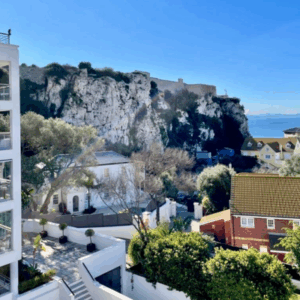
Gibraltar Property After the Frontier Comes Down: What Sellers and Buyers Should Expect
 The frontier between Gibraltar and Spain has shaped daily life, business confidence, and property decisions for decades. That reality is set to shift meaningfully in 2026, following the announcement that the UK, EU, Spain, and Gibraltar have agreed the core elements of a treaty intended to eliminate physical checks on people at the land border and relocate controls to Gibraltar’s airport and port. News outlets and official statements have described a plan to dismantle the existing fence and dispense with routine checks for travellers crossing the land frontier, with implementation widely discussed for the first half of 2026, and frequently referenced as January 2026. The precise legal text still needs to be finalised and ratified, yet momentum is clearly moving toward freer movement that unlocks the next chapter for residents and investors on both sides of the fence.
The frontier between Gibraltar and Spain has shaped daily life, business confidence, and property decisions for decades. That reality is set to shift meaningfully in 2026, following the announcement that the UK, EU, Spain, and Gibraltar have agreed the core elements of a treaty intended to eliminate physical checks on people at the land border and relocate controls to Gibraltar’s airport and port. News outlets and official statements have described a plan to dismantle the existing fence and dispense with routine checks for travellers crossing the land frontier, with implementation widely discussed for the first half of 2026, and frequently referenced as January 2026. The precise legal text still needs to be finalised and ratified, yet momentum is clearly moving toward freer movement that unlocks the next chapter for residents and investors on both sides of the fence.
To understand the property implications, start with the scale and nature of cross-border life today. Approximately fifteen thousand people have been crossing the frontier daily in recent years, which is a huge commuting heartbeat for a territory of roughly thirty four thousand residents. Friction at the fence has never been just symbolic. It has been a practical concern that affected staffing decisions, school runs, dinner reservations, and the timing of completion meetings. The political agreement signalled that the parties want to remove that friction for the movement of people, and to shift passport control to Gibraltar’s air and sea gateways under joint arrangements. The idea is to preserve sovereignty positions while creating Schengen-style ease for everyday movement at the land frontier. This change matters because property markets respond not only to prices and mortgage rates, but also to time costs and the certainty of daily routines.

The second pillar is the trading and fiscal framework that will sit behind this mobility shift. Goods movements are expected to be routed through Spanish customs infrastructure, with the Port of Algeciras acting as a principal node. This approach is designed to remove the need for a hard customs line at the fence itself. To underpin fair competition, Gibraltar is expected to increase its sales tax on goods to a minimum of around fifteen percent within three years, with a glide path thereafter to converge closer to the EU’s lower bound. These choices are presented as the price of frictionless movement for people and of clearer, less contentious trade rules, and they are intended to support predictable conditions for investors and employers. For property decision makers, the point is that clarity on goods and tax can steady business hiring plans, which feeds the rental market and improves buyer confidence.
The headline market story is supply versus confidence. Gibraltar’s supply is structurally tight, constrained by geography and planning considerations. In tight markets, sentiment shocks are amplified, both upward and downward. The anticipated end of land-border checks is a sentiment shock with operational benefits on day one, since it cuts time costs and removes uncertainty on the morning commute. Confidence that movement will be easier tends to pull forward demand from buyers who had sat on the fence. It can also shift the mix of buyers. Expect to see more interest from UK and EU nationals who prize international mobility, as well as professionals already working in Gibraltar who currently live over the line in La Línea or the wider Campo. If frequent crossing becomes seamless at the road frontier, some of those households will reassess whether they would prefer to live in Gibraltar itself rather than in Spain, particularly if workplace proximity and school choices weigh heavily for them. The agreement’s intent and the direction of travel are clear, although the treaty text still needs to be published and adopted, which is worth monitoring because final details can change behaviours at the margin. – If you’re looking for the best property for sale gibraltar has to offer, look no further!

Over the following one to three years, the spillover story on the Spanish side could become more interesting. If the fence comes down physically and practically for people, La Línea and neighbouring municipalities will be more investable for commuters who still want Spanish pricing and space. Cross-border buyers looking at Gibraltar for capital appreciation and at Spain for square metres will arbitrage both sides. That dynamic may lift values in Spanish micro-markets that have easy access to the frontier, improve high street confidence, and support refurbishment activity. In Gibraltar, the same period should see developers press ahead with selective projects where planning permits meet genuine demand. Since land is finite, redevelopment and higher quality refurbishments that bring energy efficiency, noise insulation, and smarter layouts will command a premium that outpaces the general index. Private investors should model not just purchase price scenarios, but also future running costs under the evolving tax framework for goods and services, because these affect net yields and exit pricing.

One under-appreciated effect of the agreement is on liquidity. Property liquidity in Gibraltar is often constrained by small stock and a shallow pool of comparable sales. When cross-border friction lowers, more potential buyers step into the ring at each price point, which can tighten bid-ask spreads and speed up transaction cycles. That improves the confidence of vendors who were on the fence about listing. In turn, a better flow of listings creates more data points for valuers and lenders, which reduces valuation risk premia and supports steadier lending. The net effect is a virtuous circle where price discovery is cleaner and the market functions more like an efficient small city than a micro market at the end of a queue. The caveat remains that mortgage pricing and global rates still hold real sway. If sterling rates or euro rates move higher, affordability constraints can offset some of the post-frontier tailwind in the mid-market and for first time buyers. Fiscal signals from the 2025 Gibraltar Budget and subsequent budgets will also colour expectations as the treaty moves from intent to implementation.

For sellers in the residential market who are deciding whether to list now or wait until after the frontier changes are visible on the ground, the practical answer is to treat preparation as a competitive weapon. Well presented properties with meticulous documentation, recent servicing, and realistic pricing already outperform. In the run up to implementation, buyers will try to move quickly on best in class stock in desirable buildings and neighbourhoods. That will not eliminate negotiation, but it does shorten the time to contract for homes that meet the brief. For vendors worried about leaving money on the table if the first quarter after implementation brings a jump in achieved prices, consider two tactics. The first is to build a clear upgrade path into your story, for example a recent energy efficiency improvement, high quality acoustic glazing, or a managed building with strong reserves. The second is to be precise on exclusions and inclusions to avoid late friction. Confidence at the frontier reduces one variable. Removing avoidable legal and practical variables at the property level makes the transaction smoother and often dearer.

Investors should resist the temptation to treat the frontier story as a single trade. The better approach is to segment by tenant type and building attributes. Units that serve stable, regulated employers should be prioritised for predictable occupancy and fewer arrears. Buildings with modern lifts, fresh common areas, and active management companies justify tighter yield targets because tenant stickiness is higher and capex surprises are fewer. If you are underwriting a refurbishment, price in lead times for materials under the new customs arrangements and assume that contractors will be busy once sentiment turns. Further, keep an eye on any announced timelines for dismantling physical infrastructure at the frontier, since the theatre of removing a fence can trigger a short, visible spike in enquiries and viewings that you can plan marketing around. Media reports have discussed the dismantling as early as January 2026, often with the caveat that final confirmation depends on treaty text and ratification, which is a reminder to follow official channels as the calendar turns.

The conclusion is simple. Gibraltar’s property market is approaching a structural moment that reduces friction for the movement of people and clarifies how goods and taxes will be handled. Official statements and mainstream coverage all describe the same destination. The fence stops being a daily choke point for commuters and visitors, and controls are managed in a way that preserves long-standing sensitivities while enabling normal cross-border life. In property terms, that means confidence returns first, liquidity improves second, and values follow in line with quality, location, and building governance. For sellers, preparation and timing will be everything. For buyers, readiness and discipline will count more than ever. For investors, segmentation and careful underwriting will separate luck from skill. Keep watching the treaty milestones, keep close to local advisers, and be ready to act as the frontier turns from a queue into a crossing you barely notice on the way home.
